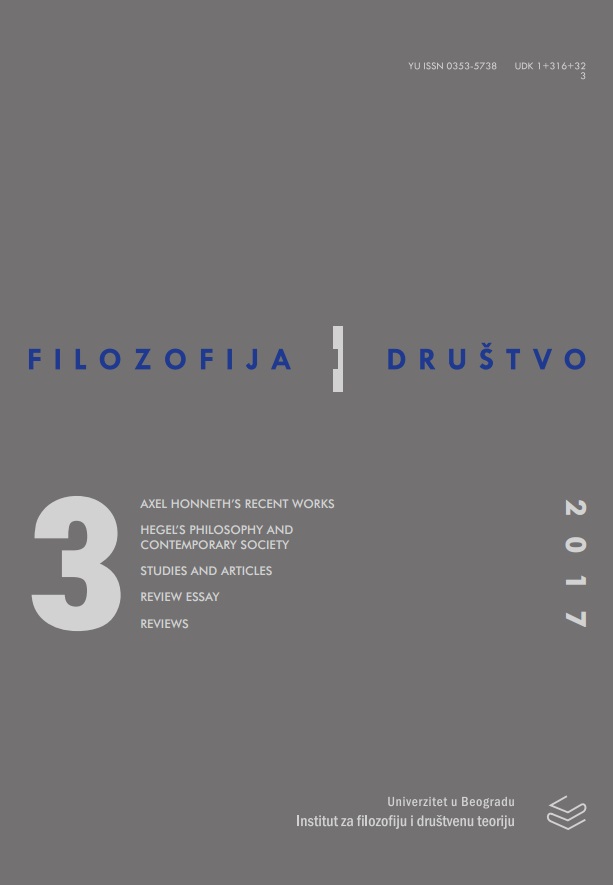Social Pathologies, False Developments and the Heteronomy of the Social: Social Theory and the Negative Side of Recognition
Social Pathologies, False Developments and the Heteronomy of the Social: Social Theory and the Negative Side of Recognition
Author(s): Luiz Gustavo da Cunha De SouzaSubject(s): Social Philosophy
Published by: Institut za filozofiju i društvenu teoriju
Keywords: Social pathologies; anomie (false developments); normative reconstruction; social criticism; social conflicts
Summary/Abstract: The aim of this paper is to explore a tension between two concepts designed to expose social discomforts in Axel Honneth’s mature work, namely social pathologies and anomie. Particular emphasis will be given to how they contribute or obstruct Honneth’s apprehension of social tensions. In the first session of this exposition I will show that Honneth’s interpretation of social pathologies is based on a conception of society as an organic whole (I). While this interpretation represents a slight change regarding Honneth’s understanding of social pathologies in Das Recht der Freiheit, it does not change the fact that in his work subsequent to that book the concept of false developments has not been properly theorized. Accordingly, social discomforts related to deviations from expected patterns of a normative reconstruction remain largely ignored. This calls for a perspective more fully able to grasp the heteronomy of social life (II). As a result, in Honneth’s mature work there seems to be a tension between the aims of a normative reconstruction and those of social critique, mainly due to an inability of the author to combine both elements of his social theory. In its final section (III), the paper will address that tension in order to critically contribute to Honneth’s attempt to link normative reconstruction, social analysis and criticism.
Journal: Filozofija i društvo
- Issue Year: 28/2017
- Issue No: 3
- Page Range: 435-543
- Page Count: 19
- Language: English

